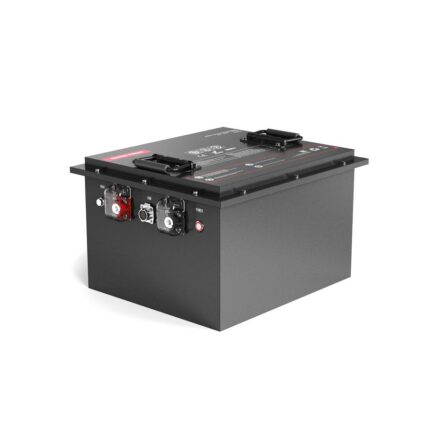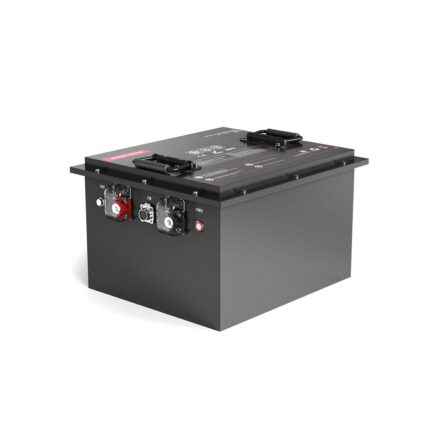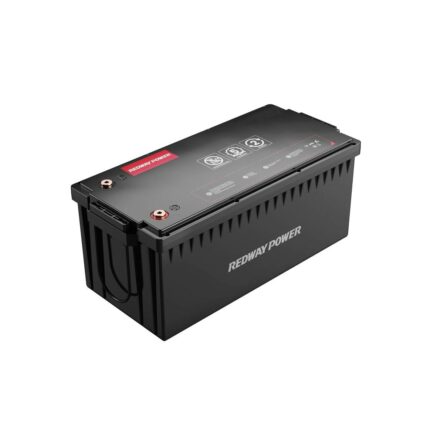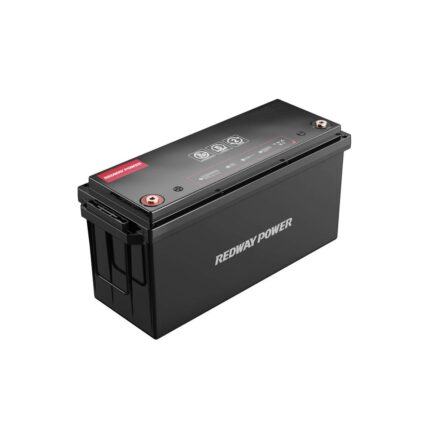36V LiFePO4 Batteries
- Forklift Lithium Battery
- Golf Cart Battery
- Server Rack Battery
- Telecom Battery
- 12V LiFePO4 Batteries
- 24V LiFePO4 Batteries
- 36V LiFePO4 Batteries
- 48V LiFePO4 Batteries
- 60V LiFePO4 Batteries
- 72V LiFePO4 Batteries
- 96V LiFePO4 Batteries
- E-Bike Battery
- All-in-One Home ESS
- Power Storage Wall
- High Voltage Server Rack Battery / System
- Power Bank
- 21700 cell
- Hot
Redway is a professional manufacturer wholesaler of 36V LiFePO4 batteries, offering various capacity options like 30, 60, 100Ah, etc. for diverse needs. The OEM 36V LiFePO4 Batteries by Redway are half the weight, twice the power, and 5X longer lifespan than traditional batteries, ideal for RVs, sightseeing carts, marine, scooters, tricycles, emergency lighting, and security systems. The OEM LiFePO4 battery (LFP) ensures deep cycle reliability, safety, long life, and the best high/low temperature performance. Redway specializes in custom lithium battery manufacturing.
Showing all 5 results
FAQs▾
Why Choose 36V LiFePO4 Batteries?
Choose 36V LiFePO4 batteries for their superior advantages. These batteries provide higher voltage and capacity, ensuring increased power and extended runtimes. With a longer lifespan compared to traditional batteries, they offer durability and cost savings in the long run. Lightweight and portable, they are easy to transport and handle. Additionally, 36V LiFePO4 batteries are environmentally friendly and incorporate enhanced safety features. Make the smart choice for your energy storage needs with 36V LiFePO4 batteries.
What Makes Redway's 36V LiFePO4 Batteries Superior?
Redway's 36V LiFePO4 batteries are superior due to their longer lifespan, high energy density, enhanced safety features, and faster charging capabilities. These batteries offer reliable performance and are well-suited for electric vehicles, solar energy storage systems, and backup power supplies. With a rugged construction and intelligent management system, Redway's LiFePO4 batteries ensure durability, optimal performance, and extended lifespan. Positive customer reviews and testimonials further attest to the superior quality and performance of Redway's 36V LiFePO4 batteries.
How Long is the Lifespan of a 36V LiFePO4 Battery?
The lifespan of a 36V LiFePO4 battery can range from 5 to 10 years, depending on various factors. These batteries are known for their impressive cycle life, with the ability to withstand 3000 to 5000 charge and discharge cycles. Compared to other types of batteries, LiFePO4 batteries offer a longer lifespan and can last up to 10 times longer than lead-acid batteries when used for the same application. Proper maintenance, including avoiding extreme temperatures and following recommended charging practices, can help maximize the lifespan of a 36V LiFePO4 battery.
What Are the Benefits of Using LiFePO4 Over Traditional Batteries?
Using LiFePO4 batteries offers several benefits compared to traditional batteries. These batteries have a higher energy density, allowing them to store more energy in a smaller and lighter package. With a longer lifespan and superior safety features, LiFePO4 batteries are reliable and durable. They perform well in a wide temperature range and are environmentally friendly. Make the switch to LiFePO4 batteries for better energy storage solutions in electric vehicles, portable electronics, and renewable energy systems. Experience the advantages of LiFePO4 batteries, including higher energy density, longer lifespan, enhanced safety, and environmental friendliness.
How Do 36V LiFePO4 Batteries Perform in Extreme Temperatures?
LiFePO4 batteries perform exceptionally well in extreme temperatures. They can operate in both high and low temperature conditions without compromising their efficiency or safety. In high temperatures, LiFePO4 batteries maintain their capacity and cycling performance, while producing less heat compared to other lithium chemistries. In cold environments, they continue to deliver power effectively, making them ideal for cold-weather camping and winter RV trips. The battery management system (BMS) plays a crucial role in protecting LiFePO4 batteries from extreme temperatures. By monitoring the battery's temperature and shutting it off if it reaches the upper limit, the BMS ensures safety and prevents damage.
What is the Charging Cycle of a 36V LiFePO4 Battery?
The charging cycle of a 36V LiFePO4 battery involves charging the battery from empty to full and then discharging it back to empty, counting as one cycle. Factors such as the depth of discharge, temperature, and charging rates influence the efficiency and lifespan of LiFePO4 batteries. To maximize their performance, it is recommended to maintain a shallow depth of discharge, manage temperature within a suitable range, and use slower charging rates. These practices help optimize the efficiency and longevity of 36V LiFePO4 batteries.
How Do I Ensure Safety with 36V LiFePO4 Batteries?
Ensuring safety with 36V LiFePO4 batteries is crucial for their optimal performance and longevity. These batteries have robust safety features, including stable chemistry, resistance to thermal runaway, and a built-in battery management system (BMS). To ensure safety, it is important to maintain proper temperature control, avoid overcharging and overdischarging, and handle the batteries with care to prevent physical damage. LiFePO4 batteries offer a stable voltage output throughout their discharge cycle, ensuring a steady and reliable power supply. With their exceptional safety features, LiFePO4 batteries provide peace of mind for various applications.
What is the Warranty for 36V LiFePO4 Batteries?
36V LiFePO4 batteries typically come with warranties ranging from 3 years to 10 years, depending on the manufacturer. For example, some manufacturers offer a 10-year warranty against manufacturing defects for their 36V LiFePO4 batteries. This warranty ensures that if any issues arise due to manufacturing defects within the warranty period, the manufacturer will repair or replace the battery free of charge. It is important to check the specific warranty terms and conditions provided by the manufacturer to ensure proper coverage and peace of mind.
How to Properly Maintain 36V LiFePO4 Batteries?
Properly maintaining 36V LiFePO4 batteries is essential for their longevity and optimal performance. Tips for maintenance include keeping the battery charged, avoiding overcharging, using the battery within its temperature range, and disposing of the battery safely. When choosing a lithium battery for your vehicle, consider factors such as compatibility, performance, brand reputation, and price. By following these tips and best practices, you can ensure that your 36V LiFePO4 battery stays in good condition and operates safely.
What Are the Different Capacity Options for 36V LiFePO4 Batteries?
36V LiFePO4 batteries come in different capacity options to cater to various power requirements. Common capacity options include 10Ah, 20Ah, 30Ah, and 50Ah. The capacity of a battery determines its energy storage and runtime. Higher capacity batteries offer longer runtimes but may be larger and heavier. It's important to choose a capacity that suits your needs and fits within the available space. Consider factors such as the power demands of your device and the desired runtime when selecting a 36V LiFePO4 battery.
FAQs
What voltage should a 36V lithium battery be charged at?
A 36V lithium battery should be charged at a voltage of approximately 42V. This is the standard charging voltage for most lithium-ion batteries, ensuring they reach full capacity without damaging the cells.
How long does a 36V lithium battery last?
A 36V lithium battery typically lasts between 5 to 10 years, depending on usage, charging habits, and environmental conditions. Regular maintenance and proper charging can extend its lifespan significantly.
How should LiFePO4 batteries be stored?
LiFePO4 batteries should be stored in a cool, dry place at a partial charge (around 50% to 70%). Avoid extreme temperatures and humidity, as these conditions can damage the battery and reduce its lifespan.
How many watts is a 36V lithium battery?
The wattage of a 36V lithium battery depends on its amp-hour (Ah) rating. For example, a 36V 10Ah battery provides 360 watt-hours (Wh) of energy (36V × 10Ah = 360Wh).
How powerful is a 36V battery?
A 36V battery's power depends on its amp-hour rating. For example, a 36V 10Ah battery can deliver 360 watts of power for one hour. The actual output will vary based on the connected load.
How many kWh does it take to charge a 36V battery?
Charging a 36V battery depends on its capacity. For instance, charging a 36V 10Ah battery takes approximately 0.36 kWh (kilowatt-hours) of energy (36V × 10Ah ÷ 1000 = 0.36 kWh).
How long can a LiFePO4 battery sit unused?
A LiFePO4 battery can sit unused for up to six months without significant capacity loss. However, it's best to store it at around 50% charge to maintain its health over long periods.
What is the best setting for a LiFePO4 battery?
The best setting for a LiFePO4 battery includes charging it at a voltage of about 14.6V to 14.8V and discharging it to a minimum of 2.5V per cell to maximize its lifespan and performance.
How can you maximize the life of a LiFePO4 battery?
To maximize the life of a LiFePO4 battery, avoid deep discharges, keep it in a moderate temperature range, use a quality battery management system (BMS), and charge it regularly to around 50-80%.
How long will a 36V 7.8 Ah battery last?
A 36V 7.8Ah battery can last about 7.8 hours at a constant load of 1 amp. The actual duration will depend on the load applied; higher loads will reduce the runtime.
How long does it take to charge a 36V battery?
Charging a 36V battery typically takes between 4 to 8 hours, depending on the charger’s output and the battery’s capacity. Using a higher amperage charger can reduce charging time.
Can a 12V charger charge a 36V battery?
No, a 12V charger cannot effectively charge a 36V battery. A 36V battery requires a charger specifically designed for 36V systems to ensure proper charging and prevent damage.
Should you equalize LiFePO4 batteries?
Equalizing LiFePO4 batteries is generally not necessary, as these batteries have built-in protections. However, balancing individual cells can enhance performance and lifespan, but it should be done with a compatible BMS.
What is the best charging voltage for LiFePO4?
The best charging voltage for LiFePO4 batteries is typically around 14.6V to 14.8V per cell. This voltage ensures full charging while avoiding damage to the cells, optimizing performance and lifespan.
How to tell if a LiFePO4 battery is fully charged?
A LiFePO4 battery is fully charged when its voltage reaches about 14.6V to 14.8V per cell. Most chargers have indicator lights or displays that show when charging is complete.







